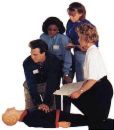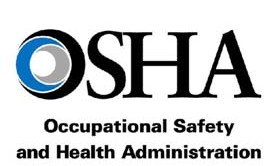Min. 6 students per class
Serving Central and Northern California since 1989





Complies with OSHA Requirements
California State Emergency Services Authority
Journal of the American Medical Association
California State Emergency Services Authority
Journal of the American Medical Association
CLASSES AVAILABLE 24 HOURS A DAY

1-888-722-SAFE
We will come to you and furnish all equipment and supplies.

Give us a call
CPR911.ORG
Welcome to the Cal Safety CPR and First Aid Training website.We have been teaching California safety classes for over 20 years and we are all ways updating our material to keep up with all changes in basic emergency care.Our CPR and First Aid classes are taught by experienced Emergency Professionals in a fun and relaxed atmothphere.
STAFF@CPR911.ORG

Performing CPR
Heart disease is the number 1 killer in the United States. Each year, almost 330,000 Americans die from heart disease. Half of these will die suddenly, outside of the hospital, because their heart stops beating.
# The most common cause of death from a heart attack in adults is a disturbance in the electrical rhythm of the heart called ventricular fibrillation.
# Ventricular fibrillation can be treated, but it requires applying an electrical shock to the chest called defibrillation.
# If a defibrillator is not readily available, brain death will occur in less than 10 minutes.
# One way of buying time until a defibrillator becomes available is to provide artificial breathing and circulation by performing cardiopulmonary resuscitation, or CPR.
# The earlier you give CPR to a person in cardiopulmonary arrest (no breathing, no heartbeat), the greater the chance of a successful resuscitation.
# By performing CPR, you keep oxygenated blood flowing to the heart and brain until a defibrillator becomes available.
# Because up to 80% of all cardiac arrests occur in the home, you are most likely to perform CPR on a family member or loved one.
# The most common cause of death from a heart attack in adults is a disturbance in the electrical rhythm of the heart called ventricular fibrillation.
# Ventricular fibrillation can be treated, but it requires applying an electrical shock to the chest called defibrillation.
# If a defibrillator is not readily available, brain death will occur in less than 10 minutes.
# One way of buying time until a defibrillator becomes available is to provide artificial breathing and circulation by performing cardiopulmonary resuscitation, or CPR.
# The earlier you give CPR to a person in cardiopulmonary arrest (no breathing, no heartbeat), the greater the chance of a successful resuscitation.
# By performing CPR, you keep oxygenated blood flowing to the heart and brain until a defibrillator becomes available.
# Because up to 80% of all cardiac arrests occur in the home, you are most likely to perform CPR on a family member or loved one.

# When an emergency situation is recognized, the first link in the chain of survival is early access. This means activating the emergency medical services, or EMS, system by calling 911 (check your community plan, some communities require dialing a different number).
# The next link in the chain of survival is to perform CPR until a defibrillator becomes available.
# In some areas of the country, simple, computerized defibrillators, known as automated external defibrillators, or AEDs, may be available for use by the lay public or first person on the scene. If available, early defibrillation becomes the next link in the chain of survival.
# Once the EMS unit arrives, the next link in the chain of survival is early advanced life support care. This involves administering medications, using special breathing devices, and providing additional defibrillation shocks if needed
# The next link in the chain of survival is to perform CPR until a defibrillator becomes available.
# In some areas of the country, simple, computerized defibrillators, known as automated external defibrillators, or AEDs, may be available for use by the lay public or first person on the scene. If available, early defibrillation becomes the next link in the chain of survival.
# Once the EMS unit arrives, the next link in the chain of survival is early advanced life support care. This involves administering medications, using special breathing devices, and providing additional defibrillation shocks if needed
CALIFORNIA
CPR and FIRST AID
TRAINING
CPR and FIRST AID
TRAINING
